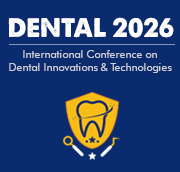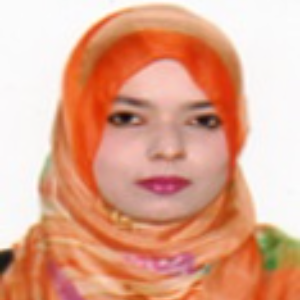Title : Evidence based management of oral manifestations in COVID-19
Abstract:
Coronavirus is an acute respiratory syndrome which is caused by a single stranded RNA virus of coranaviridae family. The most common clinical symptoms seen are fever, fatigue, headache, sore throat, shortness of breath, dry cough, abdominal pain, vomiting, and diarrhea. with or without nasal congestion, runny nose, or other upper respiratory symptoms. The oral manifestations could be a typically clinical pattern resulting from the direct SARS-CoV-2 infection or a systemic consequence, impaired immune system, given the possibility of coinfections, impaired immune system, and adverse reactions of medical treatment. With respect to oral mucosa, Angiotensin-converting enzyme 2 (ACE2) receptor are commonly seen in dorsum of tongue and salivary glands permits the attachment of the virus, their fusion, intracellular entry, and infection. Site of involvement of oral lesions in covid include. Oral manifestations reported in COVID: Taste disorders Xerostomia Ulcerations Periodontal lesions Angular chelitis Candidiasis, Erythema multiforme, ulcer, erosion, bulla, vesicle, pustule, fissured or depapillated tongue, macule, papule, plaque, pigmentation, halitosis, whitish areas, hemorrhagic crust, necrosis, petechiae, swelling, erythema, and spontaneous bleeding. The most common sites of involvement in descending order were tongue (38%), labial mucosa (26%), palate (22%), gingiva (8%), buccal mucosa (5%), oropharynx (4%), and tonsil (1%). Suggested diagnoses of the lesions were aphthous stomatitis, herpetiform lesions, candidiasis, vasculitis, Kawasaki-like, EM-like, mucositis, drug eruption, necrotizing periodontal disease, angina bullosa-like, angular cheilitis, atypical sweet syndrome, and Melkerson-Rosenthal syndrome. Oral lesions were symptomatic (painful, burning sensation or pruritus) in 68% of the cases. Oral lesions were nearly equal in both genders. The management includes complete oral hygiene instructions to the patients. Wide range of agents like artificial salivary substitutes, topical steroids, antifungal mouth washes, ointment containing neomycin, nystatin, and triamcinolone acetonide, anaesthetic agents are used for oral lesions depending upon the etiology.
Conclusion: As a dentist we need to study the behaviour of different strains of COVID 19 and their action on oral mucosa. Research should be carried out on a broader perspective on newer variants.



